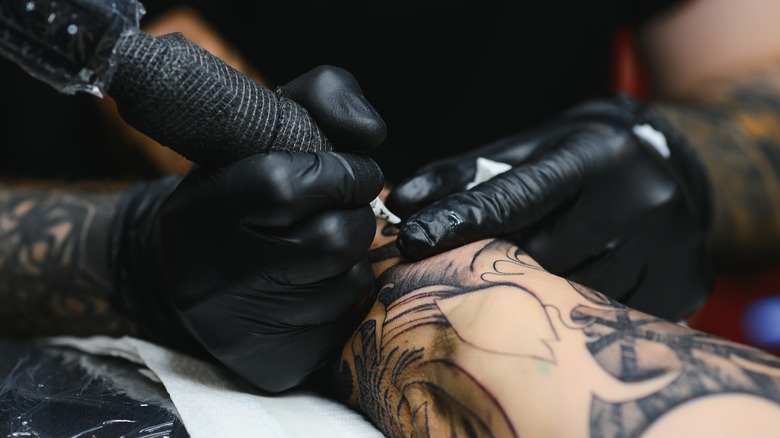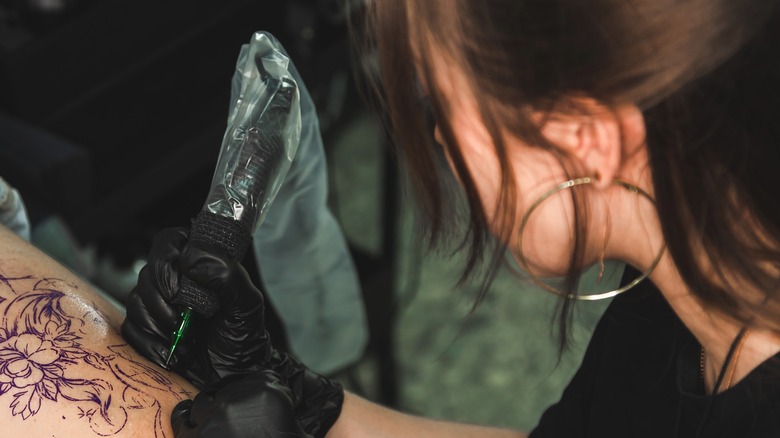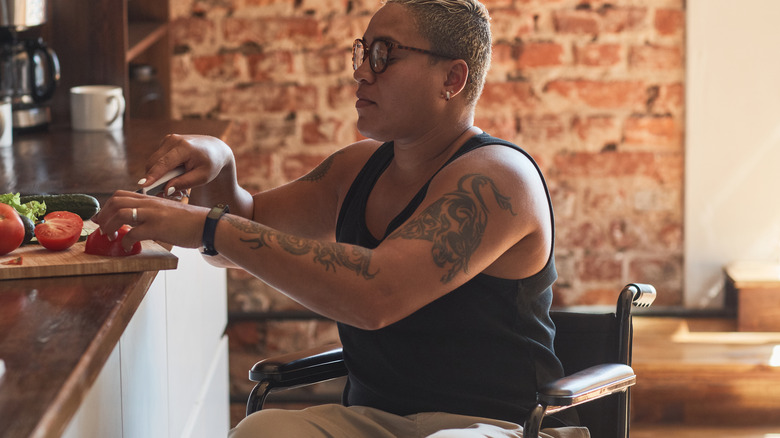What You Need To Know About Tattoo Touch-Ups
Tattoos are a lifetime commitment. This is not just because it's permanent ink being injected into your epidermis but also because they involve lifelong care. Sure, they cost a pretty penny and are extremely painful — pain which can almost be unbearable depending on where you get the tattoo on your body — but they also fade in time. This is just a fact of life no matter how much care you put into trying to keep your tattoo as perfect and pristine as possible.
"Despite the quality of the initial tattoo, the appearance can sometimes change with the ink becoming lighter or blurry over time," dermatologist Edgar Fincher tells Allure. "I think that in most cases the changing of a professional tattoo has more to do with the health of the skin than the ink itself."
The skin you have at 25 when you get that gorgeous tattoo on your shoulder is definitely not the same skin you'll have at 45, 55, or even 35 for that matter. Because of this, touch-ups are what you sign up for when you invest in a tattoo (via Tattoo Goo).
What is a tattoo touch-up?
There are two types of tattoo touch-ups that clients tend to request. The first is a touch-up that occurs within the first year of getting the tattoo and the second is a touch-up that occurs years down the road (via Inked Magazine).
The reason someone might want a touch-up in the first year is that the ink may have shifted or, in some cases, the skin was packed with so much ink that the body rejected some of it, resulting in ink oozing from the epidermis (via Authority Tattoo). It should be noted that this is very normal and can last for a couple of days. As long as there's no itching or pus, you're in the clear. It's only natural that your body would reject a foreign object and ink is, indeed, a foreign object.
As for the second reason for a touch-up, that's simply because years, maybe even decades, have passed, and you want to bring the faded, dull ink back to life. Sometimes, if your tattoo artist is still in business, they'll do the touch-up for free. If so many years have passed that your artist has moved, you've moved, or they're no longer in the industry, then you'll have to find another tattoo artist who's likely to charge what they would charge someone for a new tattoo because they're doing the touch-up with their own ink and talent.
How soon you should get your tattoo touched up
Honestly, this one is up to you. Once a tattoo is completely healed, it can be touched up. For example, if your healed tattoo isn't what you had hoped it would look like and you'd like some tweaking, you can have it touched up as early as three to five weeks after it's fully healed (via Inked Mind). If there's been an infection or some sort of issue in the healing process of the tattoo, then your artist may request you wait a full year before the touch-up for the sake of your immune system being restored.
If you never had any issue with your initial tattoo and simply want a touch-up for the sake of breathing life back into it your body art, it's recommended that your first touch-up session be somewhere between two to five years after receiving the tat (via Saved Tattoos). Tattoos that are primarily or completely black can withstand a few more years than that before needing to be touched up.
Any touch-up you do get takes roughly the same amount of time to heal, although the health of your skin always plays a role. The aftercare is the same. Tattoos are gorgeous things, but like anything on the body, they require attention, especially as we get older. Making sure you protect your tattoos from the sun, keep them moisturized, and get them touched up regularly throughout your life will guarantee that the lifetime commitment you made will always look amazing.


